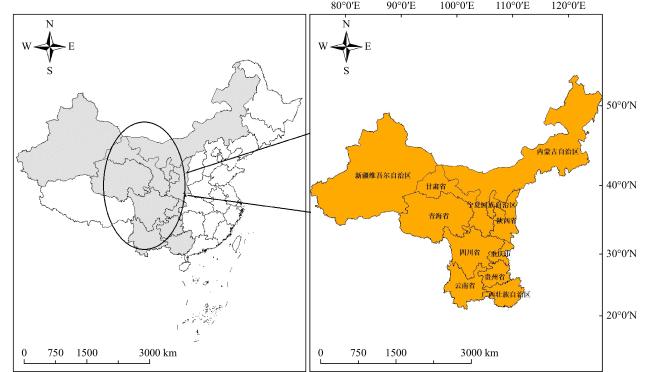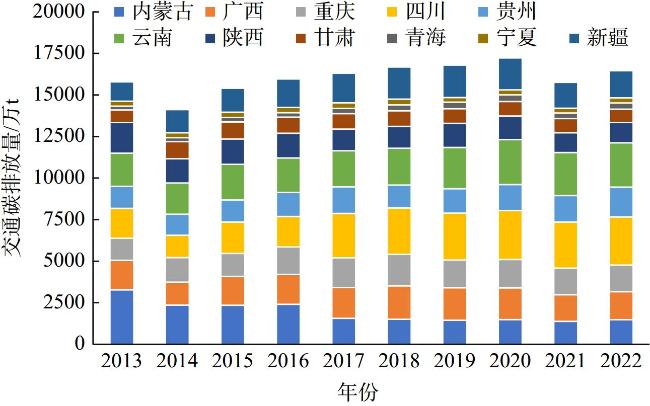1 研究区概况、研究方法和数据来源
1.1 研究区概况
1.2 研究方法
1.3 数据来源
2 结果与分析
2.1 西部地区交通碳排放量时间演变特征
2.2 西部地区交通碳排放量空间演变特征
2.3 西部交通碳排放重心转移特征
2.4 西部交通碳排放空间聚类特征
表1 2013—2022年西部交通碳排放全局莫兰指数统计 |
| 年份 | 莫兰指数 | P | Z | 年份 | 莫兰指数 | P | Z | |
| 2013 | −0.068 | 0.396 | 0.263 | 2018 | 0.276 | 0.002 | 2.952 | |
| 2014 | −0.045 | 0.327 | 0.449 | 2019 | 0.286 | 0.001 | 3.033 | |
| 2015 | 0.033 | 0.145 | 1.057 | 2020 | 0.302 | 0.001 | 3.169 | |
| 2016 | 0.063 | 0.098 | 1.293 | 2021 | 0.335 | 0.000 | 3.458 | |
| 2017 | 0.310 | 0.001 | 3.251 | 2022 | 0.350 | 0.000 | 3.557 |











